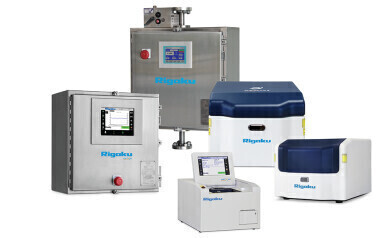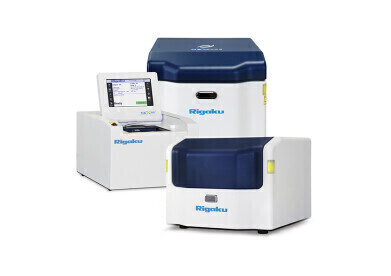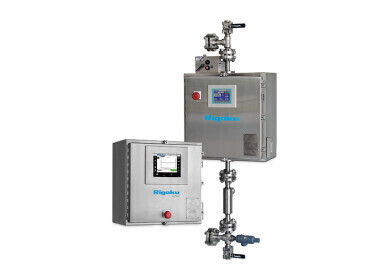Analytical Instrumentation
Fast, reliable, and cost-effective solutions for analysing sulphur, chlorine, metals, and more
Nov 23 2023
Elemental analyses are essential for the petroleum, petrochemical, chemical and refining industries. Whether monitoring crude oil, optimising the refining process, or improving the quality of products — using reliable analytical instrumentation and getting quick, high-quality results is critical. Rigaku EDXRF (energy dispersive X-ray fluorescence) benchtop and process elemental analysers serve upstream and midstream for in-field use and downstream for refineries and commercial labs. They serve many screening and monitoring needs and meet compliance for various testing methods and standards for a broad range of applications.
Affordability, versatility, and ease of use without sacrificing reliability is necessary for reliable analysis to facilitate processing purposes, meeting contract agreements, and complying with regulatory requirements worldwide. That is why accurate and reliable, versatile analysers are needed to address a wide range of needs for refineries, contract labs, etc., while still suiting budgets and occupying a small amount of space in the lab or testing facility.
Rigaku EDXRF analysers are inexpensive in comparison to other technologies and offer the flexibility and reliability users need to monitor sulphur, chlorine, metals, and other critical elements. Systems are available for various budget levels, and capabilities range from ultra-low and trace element concentrations up to percent levels. EDXRF is a well-established, non-destructive analytical technique used for testing petroleum and petrochemical products, and many organisations use Rigaku EDXRF instruments to fulfill their analytical needs. EDXRF instruments are easy to use and there is minimal to no sample preparation required. Applications range from industrial and in-plant quality assurance to research and development. From the quantification of heavy elements in crude oil to sulphur in fuels to a variety of elements in lubricating oils, Rigaku EDXRF analysers allow users to quickly adapt to new petroleum applications and replace the need for multiple single-element benchtops.
Rigaku EDXRF benchtops include the compact NEX QC Series for routine quality control, the advanced NEX DE for more demanding high throughput needs, and the powerful NEX CG II indirect excitation analyser for complex applications and research. All Rigaku EDXRF systems are multi-element analysers, giving users the advantage of measuring sulphur, chlorine, metals, and more in oils, fuels, lubricants, and used oil. Users have more analytical capabilities and can easily adjust to future applications when needed.
With an intuitive icon-driven touchscreen interface, small footprint, built-in printer, and optional portable carrying case, NEX QC Series analysers offer superior performance capabilities with the added benefits of ease of use and convenience. The NEX QC and NEX QC+ are small, self-contained, and require no external PC. They are also lightweight and transportable, making them perfect for industrial or remote field environments. NEX QC is ideal for measuring sulphur in oils per ASTM D4294 and methods ISO 20847, ISO 8754, IP 496, IP 336, and JIS K 2541-4. The NEX QC+ model offers this and more and is ideal for applications where analysis times are more critical. Additionally, NEX QC+ offers compliance with ISO 13032 for the measurement of ultra-low sulphur in diesel fuel and gasoline.
When users need a high-performance system to certify products quickly and easily, the NEX DE analyser delivers rapid and reliable ultra-low measurements of sulphur and metals. For high-throughput measurement of ULSD (ultra-low sulphur diesel), NEX DE offers compliance using the ISO 13032 method and can provide quick ASTM D8252 compliance of nickel and vanadium in crude and residual oil. Users can analyse sulphur, vanadium, iron, and nickel in crude, residual oil, bunker fuels, and other heavy hydrocarbon oils.
NEX CG II is an all-in-one petroleum analyser, offering users superior analytical capabilities that rival larger, more expensive systems. It provides fast, precise measuring and monitoring of ultra-low and trace element concentrations up to percent levels. Unlike conventional EDXRF instruments, NEX CG II uses secondary targets in full 90° Cartesian Geometry, eliminating background noise and delivering exceptionally low detection limits. Its unique 3D optical configuration gives unmatched performance and makes it an attractive analyser for any commercial lab or R&D facility.
Additionally, NEX CG II offers exceptional versatility and meets several international norms and testing criteria for the measurement of sulphur, such as analysis of ULSD per ASTM D7220 and analysis of ultra-low sulphur in gasoline per U.S. EPA Tier 3 Standards. With multi-element analysis capabilities, users can reliably analyse manganese in motor and aviation gasoline at low and ultra-low levels per ASTM D5059 Part D or achieve the lowest chlorine detection limits in crude oil per ASTM D4929 Part C.
For real-time process control needs, Rigaku offers NEX XT, a total sulphur analyser for on-line sulphur analysis, and NEX OL, a multi-element analyser for liquid streams. NEX XT delivers total sulphur measurement from 200 parts-per-million (ppm) to 6 wt% of crude, bunker fuel, fuel oils, and other highly viscous hydrocarbons, including residuum. This versatile, compact, and robust X-ray transmission/absorption (XRT/XRA) process gauge is specifically optimised for the total sulphur analysis needs of refineries, pipelines, blending operations, bunkering terminals, and other storage facilities. NEX XT continuously monitors sulphur at pressures up to 1450 psig and 200°C in custom configurations. It operates as a standalone analyser or provides real-time closed-loop control when tied into a blending or plant-wide automation system.
For liquid stream applications, NEX OL is configurable for use in classified and non-classified areas and can analyse from aluminium to uranium. It is ideal for monitoring cobalt, manganese, and bromine catalysts in PTA and catalyst in liquid streams.
Digital Edition
PIN 25.3 June/July
June 2024
Analytical Instrumentation - Recent Advances In Various Bench Scale Accelerated Oxidative Testing Methods For Fuels - Petrochemical Industry: Anton Paar Solutions Streamline Processes, Reduce H...
View all digital editions
Events
Jul 30 2024 Jakarta, Indonesia
Jul 30 2024 Jakarta, Indonesia
China Energy Summit & Exhibition
Jul 31 2024 Beijing, China
Jul 31 2024 Chengdu, China
Aug 05 2024 Moon Township, PA, USA




















